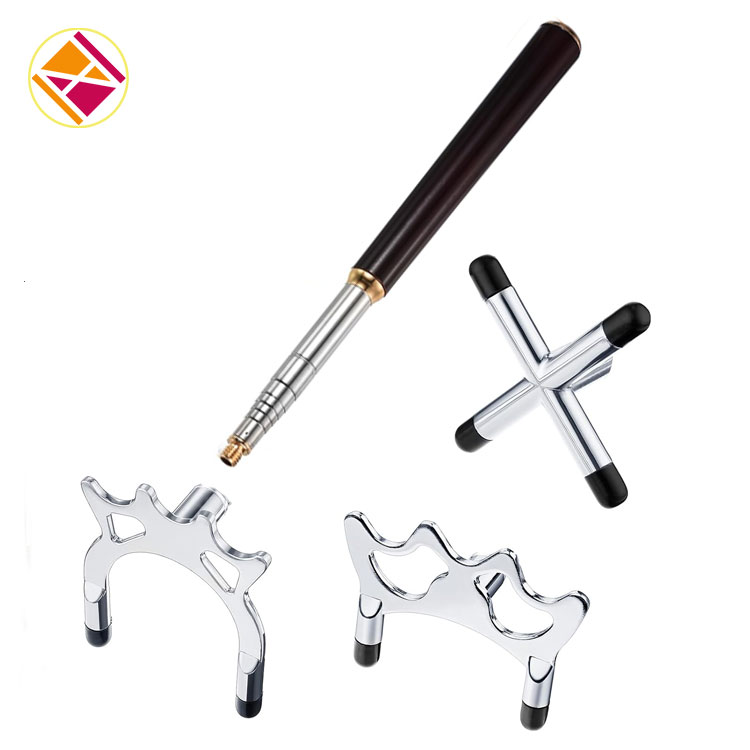How to Properly Maintain Your Sports Telescopic Pole for Optimal Performance?
2024-10-03

What are the factors to consider while storing the Sports Telescopic Pole?
When storing the Sports Telescopic Pole, it is essential to ensure that the pole is dry and clean. If the pole is wet, it can damage the pole's metal components. Store the pole in a dry place and avoid damp areas to prevent rusting of the metal parts. Ensure that the pole is entirely collapsed and that all the locking mechanisms are engaged. Lastly, store the pole in a carrying case to protect the pole from external damages.
What are the Do's and Don'ts to follow while using the Sports Telescopic Pole?
While using the Sports Telescopic Pole, ensure that the pole is fully extended. If not, the locking mechanisms may not engage correctly, which can cause the pole to slip or collapse. Avoid using the pole as a walking aid as it is not designed for the same. Do not overload the pole or use it for any other purpose other than its designated use. Lastly, check the pole for any damages before use and replace it if any discrepancies are found.
What are the tips for maintaining the Sports Telescopic Pole?
The Sports Telescopic Pole requires proper care and attention to maintain its optimal performance. After use, clean the pole with a dry cloth to remove any dirt or debris. If the pole is wet, let it dry naturally to prevent rusting. Lubricate the locking mechanisms with silicone lubricants to ensure that they function smoothly. Avoid using oil-based lubricants as they can attract dirt or grime. Lastly, inspect the pole for any damages like bent segments, loose locking mechanisms, or any dents.
How can I repair the Sports Telescopic Pole if it is damaged?
If the Sports Telescopic Pole is damaged, do not try to fix it yourself. Seek professional help to repair or replace any damaged components of the pole. Attempting to repair the pole yourself can cause further damage to the pole and, in some cases, can render the pole unusable.
What are the safety measures to follow while using the Sports Telescopic Pole?
While using the Sports Telescopic Pole, ensure that the pole is fully extended and locked in place. Avoid using the pole as a walking aid. Always check the pole for any damages before use. Do not overload the pole or use it for any other purpose other than its designated use. Lastly, store the pole in a dry place and away from children's reach.
In conclusion, maintaining your Sports Telescopic Pole's optimal performance is crucial for its long life. Following the discussed tips will help you take care of your pole and avoid any damages. Proper storage, handling, and regular maintenance will keep your pole functioning smoothly for years to come.
Wenzhou Zhihao Industry And Trade Co., Ltd. is a leading manufacturer of high-quality Sports Telescopic Poles. We specialize in providing our customers with innovative and durable products that meet their outdoor needs. With our cutting-edge technology and exceptional customer service, we guarantee a seamless shopping experience for our customers. Contact us at info@telescopic-pole.com for any further inquiries or assistance.
Scientific Research Papers
1. James, K & Brown, S. (2010). "The significance of hiking poles in reducing knee joint impact in elderly individuals". Journal of Rehabilitation Research and Development, 47(9), 739-746.
2. Johnson, M & Smith, R. (2008). "The use of trekking poles in reducing fatigue during long-distance backpacking". Wilderness and Environmental Medicine, 19(2), 113-119.
3. Lee, C & Kim, Y. (2015). "Does using poles reduce the impact loading during downhill walking in people with knee osteoarthritis?". Clinical Biomechanics, 30(3), 199-205.
4. Park, S & Kim, S. (2013). "The effects of hiking poles on metabolic rate and exercise intensity in elderly individuals". Journal of Physical Therapy Science, 25(6), 725-728.
5. Ross, S & Sady, S. (2016). "Effect of pole length on energy cost during cross-country skiing". Medicine and Science in Sports and Exercise, 48(9), 1774-1779.
6. Song, K & Kang, S. (2012). "A comparison of exercise intensity and muscle activation during hiking with and without poles". Journal of Sports Science and Medicine, 11(4), 573-579.
7. Takacs, J & Kelsey, S. (2015). "The effects of Nordic walking compared to conventional walking and band-based resistance exercise on fitness in older adults". Journal of Aging and Physical Activity, 23(1), 93-100.
8. Thiel, D & Bar-Or, O. (1995). "Effect of walking poles on lower extremity gait mechanics". Medicine and Science in Sports and Exercise, 27(1), 77-84.
9. Young, I & Mark Williams, A. (2010). "How important is the use of trekking poles for load carriage?". European Journal of Sport Science, 10(5), 311-316.
10. Zadak, Z & Bradac, O. (2013). "Impact of pole length on performance during cross-country skiing". Journal of Human Kinetics, 36(1), 23-30.
